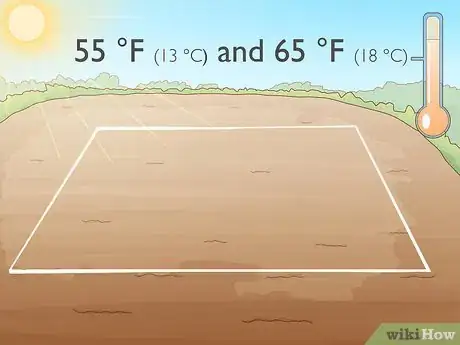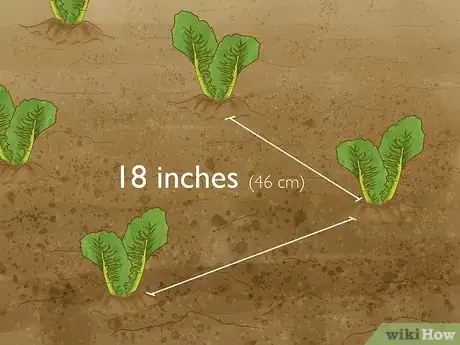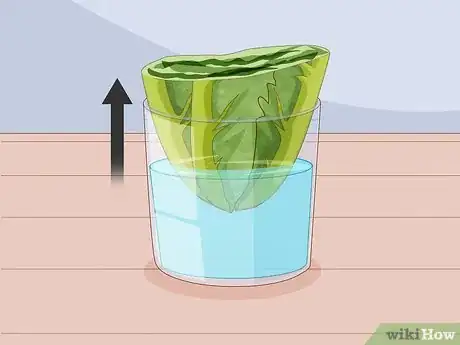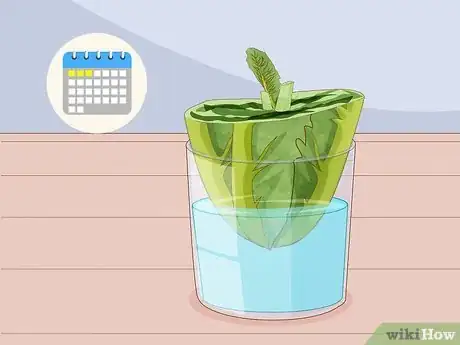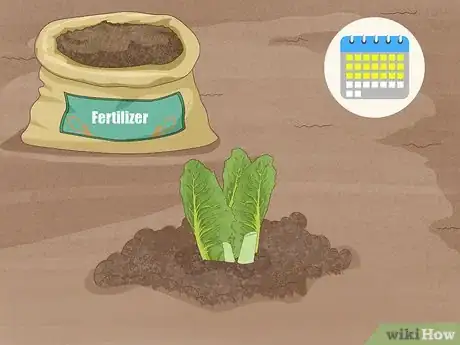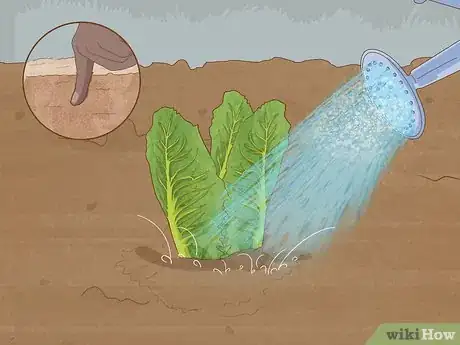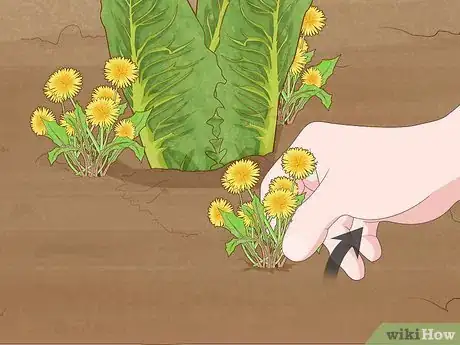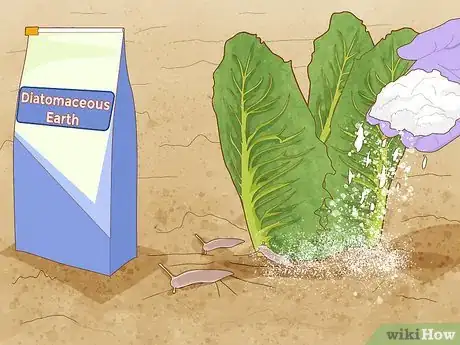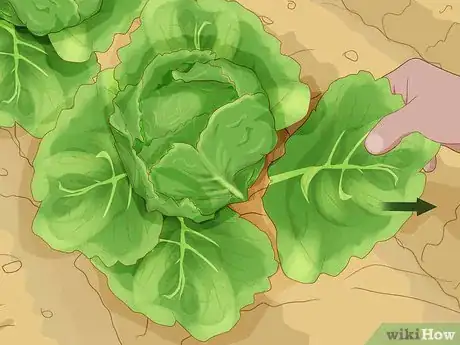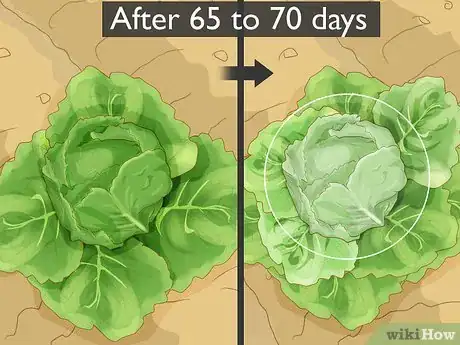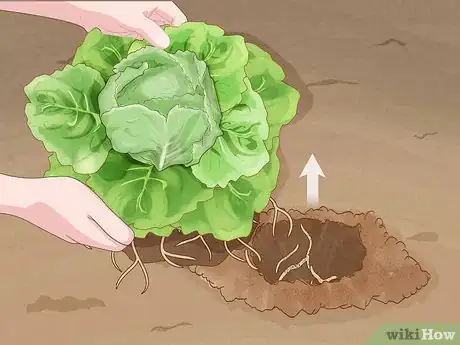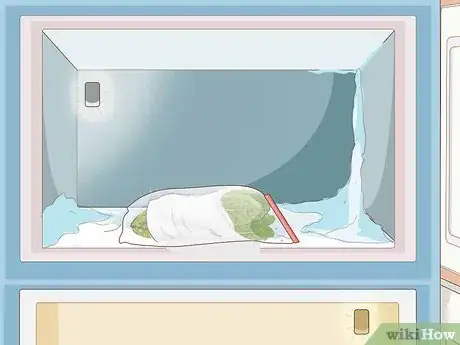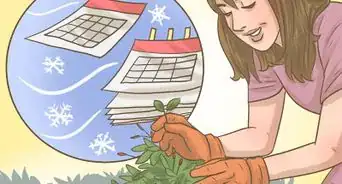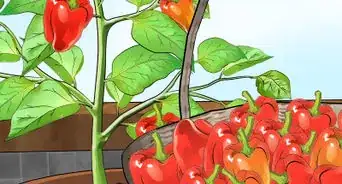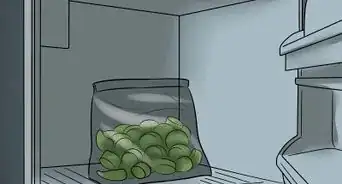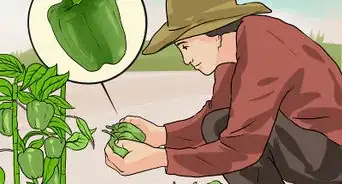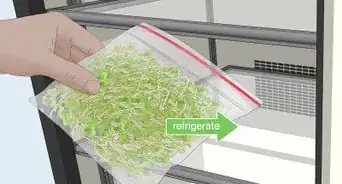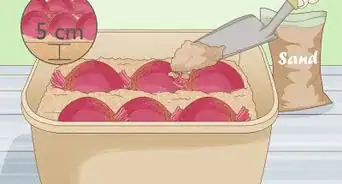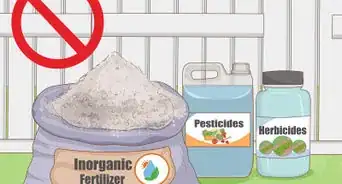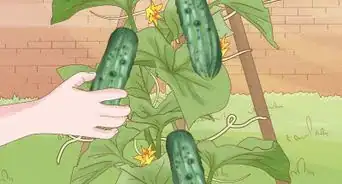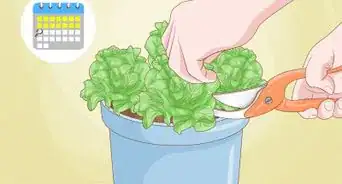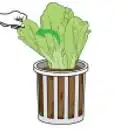This article was co-authored by wikiHow Staff. Our trained team of editors and researchers validate articles for accuracy and comprehensiveness. wikiHow's Content Management Team carefully monitors the work from our editorial staff to ensure that each article is backed by trusted research and meets our high quality standards.
This article has been viewed 23,631 times.
Learn more...
Romaine lettuce is a staple green in many diets, and for good reason! The leafy green makes a tasty base for salads no matter where it is from, but homegrown lettuce has a flavor that store-bought varieties cannot rival. Growing your own lettuce is easy under the right conditions, and you can sprout lettuce from seeds or regrow it from a stem you bought at the store. Even without a green thumb, you will soon be able to eat hearty Romaine freshly picked from your garden.
Steps
Planting Romaine Lettuce from a Seed
-
1Evaluate your region’s climate and the season you are in. Romaine lettuce is a hardy plant that can tolerate light frosts and high heat, but it originated in the Mediterranean, and grows best in mild, damp climates and seasons. Try planting in early spring or the weeks of fall before the first frost.[1]
- Growing Romaine in the summer or a hot climate is more of a challenge, as temperatures above 80 °F (27 °C) will cause the lettuce to “bolt,” or shut down leaf production and turn brown.
-
2Find a suitable spot with the right soil. Your lettuce will need plenty of sun, and the soil should be moist, well drained, nutrient rich, and be above 40 °F (4 °C). You can grow Romaine in a pot, a planter, or in the ground, so store-bought or garden soil will both work just fine.[2]
- Ideally the soil will be between 55 °F (13 °C) and 65 °F (18 °C).[3]
Advertisement -
3Plant the Romaine seeds directly in the ground or indoors in a pot. Home gardeners will most likely find sprouting the seeds inside before transplanting them to the outdoors to be easier, with the seeds being fragile and small. If you plant the seeds indoors, don't place more than one in a single pot.[4]
- You should plant the seeds around 1⁄4 inch (0.64 cm) to 1⁄2 inch (1.3 cm) below the top of the soil.
-
4Let the seeds sprout, and transfer to outdoor soil if planted indoors. In the right conditions, your Romaine seeds will begin to sprout in 7 to 10 days, but it may take longer with cooler or warmer weather. If it takes significantly more time, there may have been an issue with the seeds, the soil, or the weather.[5]
- To transplant the lettuce sprouts, wait for it to have at least 4 fully matured leaves and a developed root system and then remove the full potted plant and place them into holes roughly the size and shape of the pot.[6]
-
5Clear out the least-developed sprouts. When the sprouts have grown a few small leaves, pull some to create a spacing of 12 inches (30 cm) to 18 inches (46 cm) between plants. If you are transplanting, use this range as a guide for spacing the plants when moving them into their new home.[7]
Regrowing Romaine from a Stem
-
1Cut the stem, leaving about 1 inch (2.5 cm) above the base. Whether you purchased your lettuce at a supermarket or grew it yourself, a head of Romaine will likely still be able to sprout a few more leaves, or even re-establish itself as a whole lettuce plant![8]
- Try to make the cut straight, and without a jagged or rough top. Tearing the lettuce will not allow it to grow properly.
-
2Place the stem in a dish filled with water, leaving the top exposed. Make sure that the stem is standing straight up in the water, in order to allow it to soak up both air and water. Keep the dish inside by a window to protect it from the elements, while still allowing enough sunlight to reach it.
-
3Allow the stem to soak until the stem begins to sprout. It may begin to sprout overnight, but it can also take up to 3 full days to see a sprout at the top. Letting the stem soak for over 3 days may lead to mold or other issues, so remove it from water before that can happen.[9]
- Don’t add any more water while the stem is soaking, unless it has all evaporated.
-
4Plant the sprouts in moist, cool soil with a fair amount of sun. When you move the sprouts from the water dish to the soil, allow the tops of the stem to breathe above the soil while ensuring that the soil comes up high enough for roots to take hold.[10]
- A good way to find the right balance is to make sure the top of the stem is just above flush with the soil.
-
5Place mulch or straw around the planted lettuce. This is necessary to keep the soil moist around your lettuce plants and allow them to take root without blowing over or being forced to compete with weeds. You should water them frequently as they are taking root in the soil.[11]
Helping Your Romaine Grow
-
1Add fertilizer to the soil if you transplanted the sprouts. Around 3 weeks after you place the formerly potted plants in the soil, fertilizer will make the transition smoother and keep the plant’s growing process fast. Store-bought or homemade fertilizer are both good options for this.[12]
- The faster lettuce matures, the crisper and tastier the result will be.[13]
-
2Keep the moisture in the soil high by watering frequently. Depending on weather conditions, watering daily may be too much, but if the soil looks at all dry, water the plant. Any time the plant appears to be wilting, immediately sprinkle water all over the plant.[14]
- You can place mulch around your lettuce plants to help retain moisture and a cool temperature in the soil, with the added benefit of warding off weeds.
-
3Remove any weeds growing close to the lettuce. Romaine does not grow well with weeds, which will steal the light, moisture, and nutrients the plant needs in order to grow big and tasty. Weeding carefully by hand will prevent you from accidentally ripping up the lettuce’s fragile root system.[15]
-
4Keep pests away with natural solutions. While aphids, slugs, and other garden pests are particularly drawn to lettuce, the leafy green takes up pesticides easily. You should always use a healthier choice, like natural soap or diatomaceous earth, which can be found in garden, hardware, and natural food stores.[16]
Harvesting the Lettuce
-
1Pluck leaves from the outer ring as the plant matures. Removing mature leaves from the plant as it grows will not only provide you with a regular supply of fresh lettuce you can use in the kitchen, it will help the plant grow for longer before reaching full maturity.[17]
- Romaine that fully matures toughens quickly and becomes bitter.
-
2Check to see if the plant has reached maturity. A mature head of lettuce is whiter and less loose than an immature one. You can expect Romaine to reach maturity around 65 to 70 days after it was planted. If you planted the seeds in the fall, it is important to harvest the whole plant before it gets too cold.[18]
- While Romaine is hardy enough to survive cold weather, you will want to remove it from the ground before the first frost of the year.
-
3Pull the plant out of the ground, roots and all. The head will look similar to one you might buy in a store, though depending on the quality of the growing conditions, it may be quite a bit bigger. If the plant is nearby an immature head, be careful not to pull that one up as well.[19]
- Cutting the head of lettuce above the roots can lead to strange growth if you were to try and grow the Romaine for a second season.[20]
-
4Store your lettuce in a bag in the fridge. Just like with store-bought Romaine, pull leaves off as needed, rather than storing them as loose, individual leaves to preserve freshness. The head will keep for around 10 days before starting to go bad.[21]
- Use a loose bag, rather than a sealing one, to allow the lettuce to breathe.
References
- ↑ https://www.almanac.com/plant/lettuce
- ↑ https://www.almanac.com/plant/lettuce
- ↑ https://www.almanac.com/plant/lettuce
- ↑ https://www.gardeningchannel.com/grow-romaine-lettuce/
- ↑ https://www.almanac.com/plant/lettuce
- ↑ https://www.almanac.com/plant/lettuce
- ↑ https://www.gardeningchannel.com/grow-romaine-lettuce/
- ↑ https://dengarden.com/gardening/Growing-Romaine-Lettuce-from-Cuttings
- ↑ https://dengarden.com/gardening/Growing-Romaine-Lettuce-from-Cuttings
- ↑ https://dengarden.com/gardening/Growing-Romaine-Lettuce-from-Cuttings
- ↑ https://dengarden.com/gardening/Growing-Romaine-Lettuce-from-Cuttings
- ↑ https://www.almanac.com/plant/lettuce
- ↑ https://www.gardeningchannel.com/grow-romaine-lettuce/
- ↑ https://www.almanac.com/plant/lettuce
- ↑ https://www.almanac.com/plant/lettuce
- ↑ https://www.gardeningchannel.com/grow-romaine-lettuce/
- ↑ https://www.gardeningchannel.com/grow-romaine-lettuce/
- ↑ https://www.gardeningchannel.com/grow-romaine-lettuce/
- ↑ https://www.gardeningchannel.com/grow-romaine-lettuce/
- ↑ https://www.gardeningchannel.com/grow-romaine-lettuce/
- ↑ https://www.almanac.com/plant/lettuce

